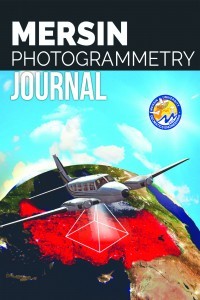LIGHT RAIL LINE DESIGN FOR EAST BLACK SEA REGION: A CASE STUDY OF TRABZON
LIGHT RAIL LINE DESIGN FOR EAST BLACK SEA REGION: A CASE STUDY OF TRABZON
Light Rail System, , GIS , Orthophoto,
___
- Arikan, Y., Akkas, O.P., Cam, E. (2018). Realization of Kirikkale light rail system study, International Journal of Engineering Research and Development, 10 (3), pp. 6-11.
- Kirlangicoglu, C. (2016). Urban Criteria Decision Making Methods with urban rail system corridor planning, Istanbul University Faculty of Letters Journal of Geography, 33, pp. 53-71.
- Love, P.E.D., Ahiaga-Dagbui, D., Welde, M., Odeck, J. (2017). Light rail transit cost performance: Opportunities for future-proofing, Transportation Research Part A, 100, pp. 27–39.
- Heilmann, K. (2018). Transit access and neighborhood segregation. Evidence from the Dallas light rail system, Regional Science and Urban Economics, 73, pp. 237–250.
- Peng, Y., Li, Z., Choi, K. (2017). Transit-oriented development in an urban rail transportation corridor, Transportation Research Part B, 103, pp. 269–290.
- Mulley, C., (Patrick) Tsai, C., Ma, L. (2018). Does residential property price benefit from light rail in Sydney?, Research in Transportation Economics, 67, pp. 3-10.
- Camins-Esakov, J., Vandegrift, D. (2018). Impact of a light rail extension on residential property values, Research in Transportation Economics, 67, pp. 11-18.
- Huanga, W., Shuaia, B., Suna, Y., Wanga, Y., Antwi, E. (2018). Using entropy-TOPSIS method to evaluate urban rail transit system operation performance: The China case, Transportation Research Part A, 111, pp. 292–303.
- Kołoś, A., Taczanowski, J. (2016). The feasibility of introducing light rail systems in medium-sized towns in Central Europe, Journal of Transport Geography, 54, pp. 400–413.
- URL-1http://www.trabzon.gov.tr/cography-features, Access Date: 15.04.2019.
- URL-2 https://en.wikipedia.org/wiki/Trabzon, Access Date: 15.04.2019.
- Yayın Aralığı: Yılda 2 Sayı
- Başlangıç: 2019
- Yayıncı: Mersin Üniversitesi
3D MODELLING OF KAYSERI TEKGOZ BRIDGE
Ali ULVİ, Abdurahman Yasin YİĞİT
AUTOMATIC ROAD DETECTION FROM ORTHOPHOTO IMAGES
Abdurahman Yasin YİĞİT, Murat UYSAL
INVESTIGATION OF PHENOLOGICAL STAGES OF WHEAT PLANT USING VEGETATION INDEX
LIGHT RAIL LINE DESIGN FOR EAST BLACK SEA REGION: A CASE STUDY OF TRABZON
Hatice ÇATAL REİS, Abdulkadir BİRİNCİ
THE EFFECT OF DIFFERENT FLIGHT HEIGHTS ON GENERATED DIGITAL PRODUCTS: DSM AND ORTHOPHOTO
Mehmet Özgür ÇELİK, Aydın ALPTEKİN, Fatma BÜNYAN ÜNEL, Lütfiye KUŞAK, Engin KANUN
